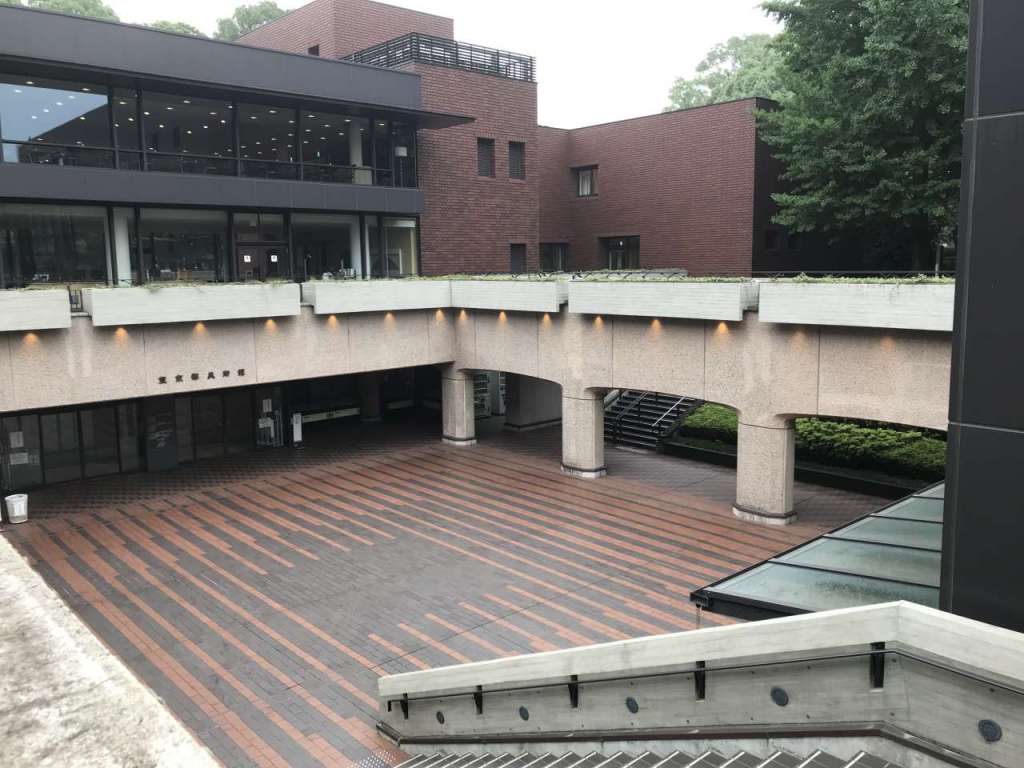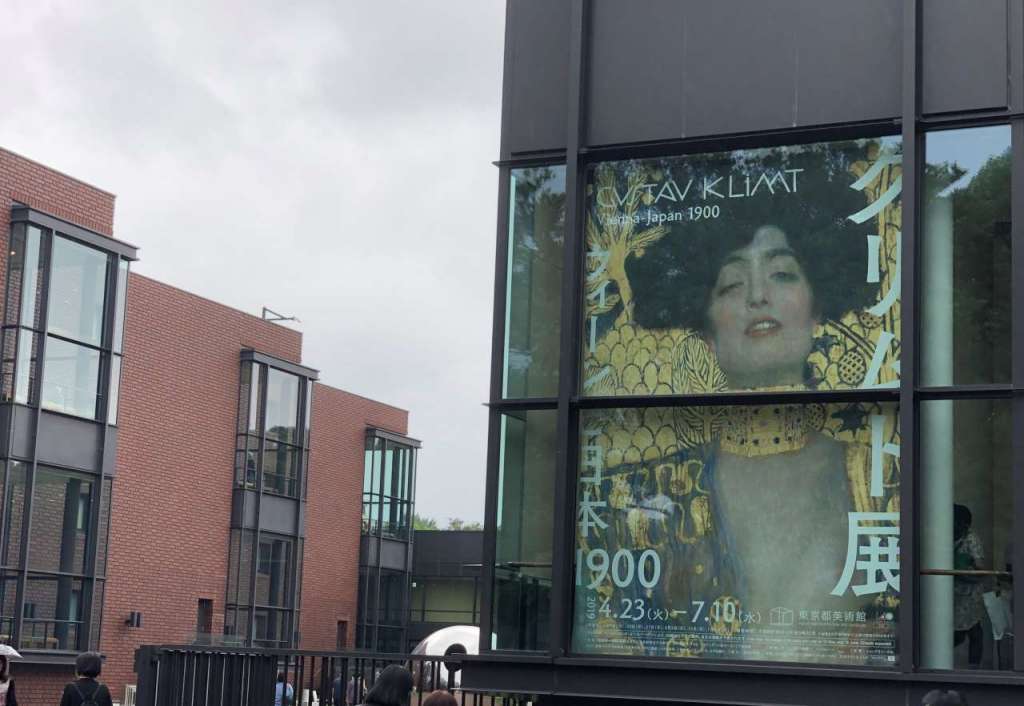“Tokyo Review 045” Ueno area-8
Klimt exhibition at Tokyo Metropolitan Art Museum
Soon after the “Le Corbusier exhibition”, I went to see the “Gustav Klimt: Vienna-Japan 1900” at the Tokyo Metropolitan Art Museum, also in Ueno.
The Museum looks as if it is made by bricks, but it was built using the reinforced concrete structure and the outer walls are cast-in tiles. Considering that, the building height is restricted to be under 15m in the scenic area. The architect Kunio Maekawa had designed the central square as a sunken plaza, setting the entrance and the lobby on the first basement floor. The block for the special/permanent exhibition and the block for the cultural activity are made independently and arranged to surround the open space. Among these, the four blocks for public exhibition room were laid out slightly staggered. This was a way of expressing Maekawa’s unique order of the architectural space composition just as creating a small urban space.
Setting the restaurant at the best place may also be reflecting Maekawa’s design philosophy. This restaurant is operated by Seiyo-ken, which is similar to the restaurants from the Tokyo Bunka Kaikan and the National Science Museum. Seiyo-ken is a well-established Western restaurant that is said to be the pioneer of French restaurants in Japan. It was established in Tsukiji with the assistance of Sanemi Sanjo and Tomomi Iwakura in 1872. In 1876, based on the recommendation of Tomomi Iwakura who returned home from the inspection, Ueno Seiyo-ken opened beside the Shinobazu Pond as a place for eating, drinking and social affairs in Ueno Park area. Ueno Seiyo-ken plays the role of the head office after the Tsukiji head office was destroyed by the Great Kanto Earthquake.
The exhibition of Gustav Klimt was held in commemoration of the 100th anniversary of Klimt’s death. We could see more than 25 oil paintings, the most ever in Japan. Among those, just watching one of his golden age masterpieces came from the Belvedere Palace of Austria, “Judit 1,” was awesome. Klimt’s expressive power seemed to be overwhelmed, such as the expression of a devout widow immediately after deceiving the enemy general.
This year is the 150th anniversary of friendship between Japan and Austria, and Klimt’s work was also influenced by the use of gold leaf on Japanese crafts. There is no doubt that Japan has adopted Western culture, but conversely, Japan also has a culture that can be proud of in the world.

